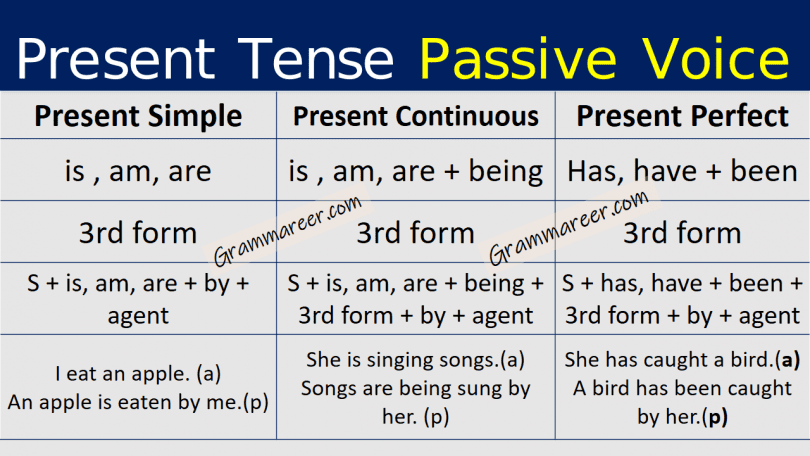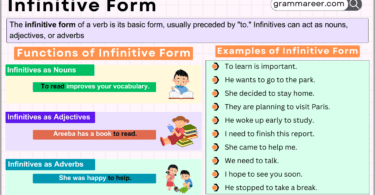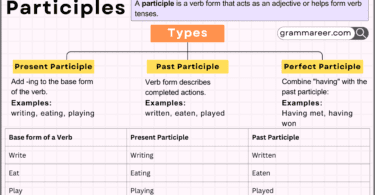Mastering present tense passive voice is essential for clear and effective communication. Many English learners struggle with forming passive sentences correctly, especially when converting from active voice. Understanding key grammar rules makes it easier to write and speak with confidence. In this blog post, you’ll learn simple rules, sentence structures, and Urdu translations to help you use passive voice correctly.
📖 Keep improving your English with our detailed grammar lessons!
Table of Contents
Present Tense Passive Voice in English
The present tense passive voice is a grammatical structure where the focus is on the action rather than the subject performing it. It is formed using “is,” “am,” or “are” (for present simple) and “is being,” “am being,” or “are being” (for present continuous) along with the third form of the verb. This structure is commonly used when the doer is unknown or unimportant.
Present Indefinite Tense – Passive Voice
Rules for Conversion:
✔ Swap the Object and Subject – Place the object of the active voice sentence in the subject position and the subject in the object position.
✔ Use “is,” “am,” or “are” in place of “do” and “does.”
✔ Use the third form of the verb (past participle).
Formula:
Subject + is/am/are + 3rd form of verb + by + agent

Examples:
✔ I eat an apple. (Active Voice)
An apple is eaten by me. (Passive Voice)
✔ His mother beats him. (Active Voice)
He is beaten by his mother. (Passive Voice)
✔ They complete the work. (Active Voice)
The work is completed by them. (Passive Voice)
✔ She writes a letter. (Active Voice)
A letter is written by her. (Passive Voice)
✔ We play football. (Active Voice)
Football is played by us. (Passive Voice)

Present Continuous Tense – Passive Voice
Rules for Conversion:
✔ Swap the Object and Subject – Place the object of the active voice sentence in the subject position and the subject in the object position.
✔ Use “is being,” “am being,” or “are being” in the present continuous tense.
✔ Use the third form of the verb (past participle).
Formula:
Subject + is/am/are + being + 3rd form of verb + by + agent
Examples:
✔ I am writing a letter. (Active Voice)
A letter is being written by me. (Passive Voice)
✔ She is reading a book. (Active Voice)
A book is being read by her. (Passive Voice)
✔ They are watching a movie. (Active Voice)
A movie is being watched by them. (Passive Voice)
✔ We are making a cake. (Active Voice)
A cake is being made by us. (Passive Voice)
✔ The teacher is teaching the students. (Active Voice)
The students are being taught by the teacher. (Passive Voice)

Present Perfect Tense – Passive Voice
Rules for Conversion:
✔ Swap the Object and Subject – Place the object of the active voice sentence in the subject position and the subject in the object position.
✔ Use “has been” or “have been” according to the subject.
✔ Use the third form of the verb (past participle).
Formula:
Subject + has/have + been + 3rd form of verb + by + agent
Examples:
✔ I have eaten sweets. (Active Voice)
✅ Sweets have been eaten by me. (Passive Voice)
✔ She has caught a bird. (Active Voice)
✅ A bird has been caught by her. (Passive Voice)
✔ They have finished the project. (Active Voice)
✅ The project has been finished by them. (Passive Voice)
✔ The teacher has checked the papers. (Active Voice)
✅ The papers have been checked by the teacher. (Passive Voice)
✔ He has completed the assignment. (Active Voice)
✅ The assignment has been completed by him. (Passive Voice)

You May Also Like
- Infinitive Phrase in English with Examples
- Types of Clauses in English with Examples
- 100 English Words Followed by Prepositions with Urdu Meanings





